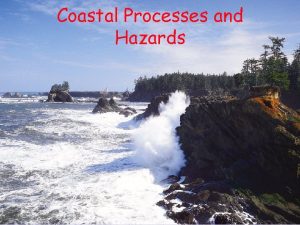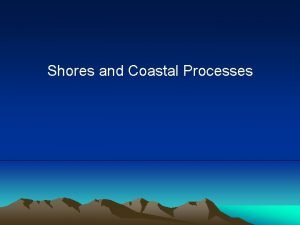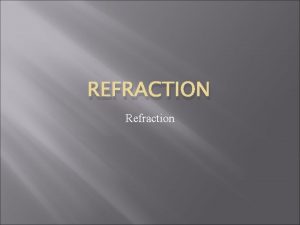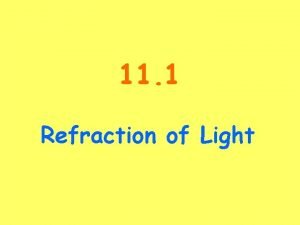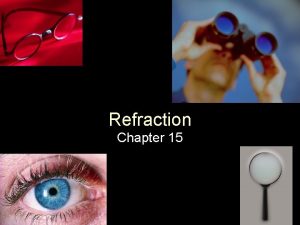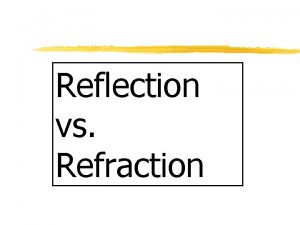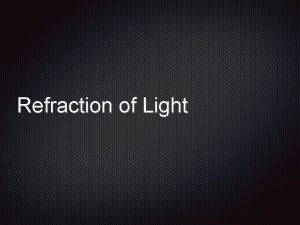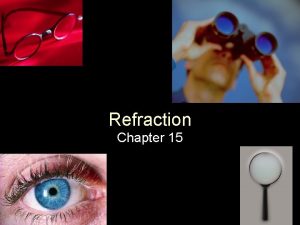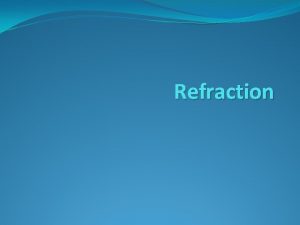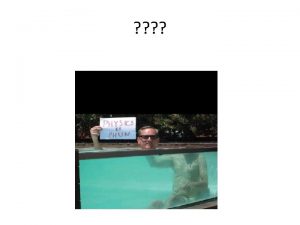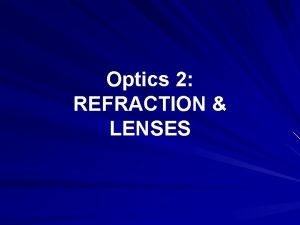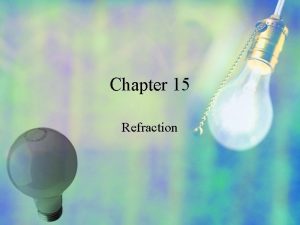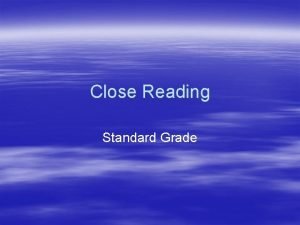Wave Refraction in Coastal Area Wave refraction Close













- Slides: 13

Wave Refraction in Coastal Area

Wave refraction • Close to coast, water gets more shallow • Waves are slowed down • If waves arrive at an angle, one part is slower than the rest • Causes waves to bend = wave refraction

Wave refraction Bay Headland

• Waves arriving at bays are slow (deposition) • At headlands, faster (erosion)

• A sequence of features is produced as headlands are degraded • Sea cliffs • Waves erode base undercutting the cliff retreats

• Also produces sea caves • As cliffs retreat produces a wavecut platform

• Headlands may be eroded back leaving a remnant (stack) stack

Longshore drift • Waves arrive at a coast at an angle (swash) • Backwash returns at 90 degrees Sand is moved along the beach = longshore drift or longshore current

Coastal deposition • Result of longshore drift and a lot of sediment • = produces extensions of deposit from the shoreline

spit = curved extension • May grow across a bay (baymouth bar) • May link an island to the main land (tombolo)

TIDES • Daily changes in sea levels • Tides rise (FLOOD) to produce a HIGH TIDE • And fall (EBB) (LOW TIDE) • Produced by the gravitational pull that the Sun and Moon exert on the Earth’s surface (including the oceans) Moon/ Sun

This side is pulled towards the Sun and/or Moon by gravitational attraction This side bulges out because of inertia Therefore, there are two high tides on Earth at any one time

Every 24 hours 50 minutes any point on the Earth rotates through two bulges Each location experiences 2 high (FLOOD) tides and 2 low (EBB) tides
 Furzy cliff
Furzy cliff Wave refraction
Wave refraction Erosional coastal landforms
Erosional coastal landforms Electromagnetic waves are longitudinal waves true or false
Electromagnetic waves are longitudinal waves true or false Carbon dioxide temperature
Carbon dioxide temperature Difference between full wave and half wave rectifier
Difference between full wave and half wave rectifier Compare and contrast transverse and longitudinal waves
Compare and contrast transverse and longitudinal waves Half full wave rectifier
Half full wave rectifier Full wave bridge rectifier with center tapped transformer
Full wave bridge rectifier with center tapped transformer Determining the arrival times between p-wave and s-wave
Determining the arrival times between p-wave and s-wave Rectified sine wave fourier series
Rectified sine wave fourier series Wave wave repeating
Wave wave repeating The nature of waves chapter 10 section 1
The nature of waves chapter 10 section 1 Odd half wave symmetry
Odd half wave symmetry

